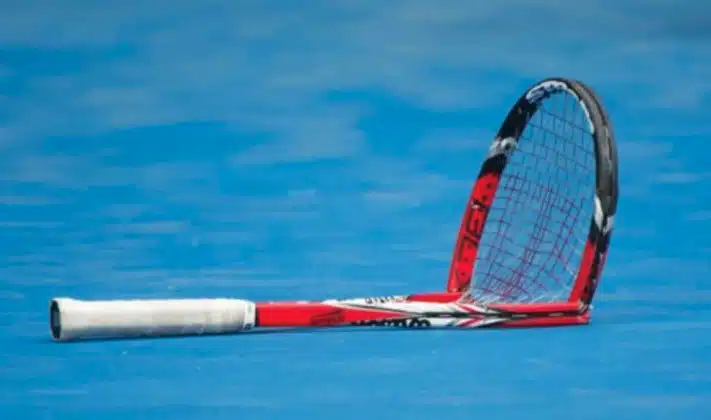 Photo: tennishead.net
Photo: tennishead.net
What we'll cover in this article:
Stay in the loop!
Want to be updated when we publish? Be sure to sign up for our newsletter. No spam, we promise!
10 Common Mistakes Tennis Players Make
Technical changes to your swing can take months to master. But tactical changes and court awareness can transform your game instantly. Here are ten common mistakes that amateur tennis players make. Recognize any? Let’s make some positive changes.
1.The racket dangle
Look around next time you play and check them out. The racket dangle occurs when you forget to return to the ready position. This is crucial for being prepared for the next shot and also helps prevent injuries. If you hold your racket in your dominant hand all the time, that arm never gets a rest and this can mean overuse injuries. Tennis elbow is very common among recreational players.
Once you finish your swing, take the racket straight back to the ready position: two hands on the racket and a relaxed grip. You should have one hand on the racket only for the forward portion of the swing. Too tough? Try shadow swings at home or in practice with a friend or on a ball machine. That’ll make things easier when you’re under pressure.
2.Not moving the feet enough
Tennis is all about movement and dancing feet. If you’re not sweating, you’re not doing it right. You’ll hit better shots by putting more effort in with your feet. The intensity and work rate should be similar to basketball or soccer.
Get a lesson with a coach or try some footwork videos from the internet to get used to moving your feet at the right intensity. Have a look at Roger Federer's footwork in this video for a great example.
3.Not understanding the relationship between the strings and the ball
It’s amazing how many tennis players can’t tell you how to aim the ball. It’s crucial to understand how your racket face (string position) affects the flight of the ball and which part of the ball to hit. The two are directly related.
Imagine the ball traveling towards you is a face. Hit the nose and your racket strings will be fully flat and send the ball in a straight line. Hit the chin, the strings will be open and the ball will travel upwards. How about the forehead? Your strings will be closed and the ball will go downwards. Hit the right cheek, it will go left, and the left cheek will send it right.
Generally, you’ll be hitting the left cheek, nose, and right cheek. Try to avoid the chin or forehead. Practice different contact points to get a feel for what each string direction produces.
4.Holding the grip incorrectly
Ready to revolutionize your power? Do you hold the handle too high towards the racket head, with an inch or more sticking out under your hand? Your little finger should be flush with the butt of the racket. See the image of Nadal below. This will promote looseness and create longer levers so you maximize racket-head speed and spin. Not comfortable with that? Try some shadow swings at home to build up your arm strength. Then learn the different grips for each shot and how each one can affect your game. Check out our article for some forehand-grip tips here.
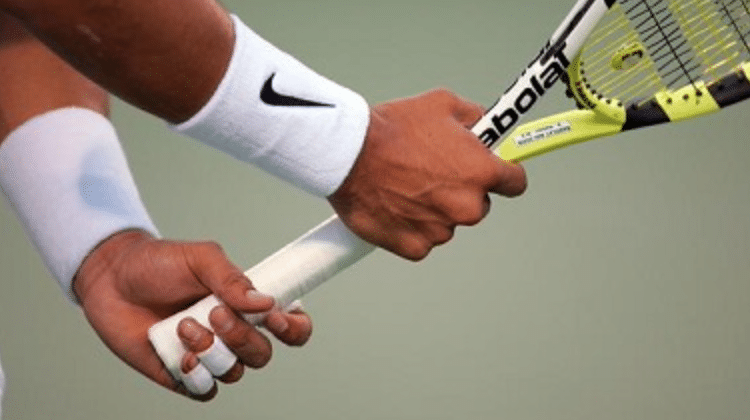
5.Drifting inside the court
Once the point begins, you might find yourself drifting forward into no man’s land. You’ll be exposed because the ball can bounce at your feet or behind you. You’ll also have much less time to react and the ball will bounce higher in relation to your body than if you’re further back. Try to recover between shots to at least two feet behind the baseline so you have space and time to move to the ball.
You should be inside the baseline only if you’re moving forward to hit a shot or transitioning to the net to volley. Try some practice drills or rallies using a marker to recover to after each shot. See this video from Tamas Bogyo on how to recover from no-man's land:
6.Recovering too slowly
Hit a great shot? Don’t stand and admire it. Get ready for the next one! Aim to return to your ready position before your shot bounces on the other side of the net and before your opponent hits it. Otherwise, you’ll not be in position for the next shot. Practice drills and rallies where you try to beat the bounce back to your ready position. Watch the ball and recover at the same time.
See this video from Ryan Reidy for some more advanced tips about practicing the correct recovery position:
7.Rushing toward the ball
Let the ball come to you. Don’t charge towards it. You’ll only strike the ball at shoulder height and above and be jammed up to the ball. You’ll also be exhausted from moving back and forth more than necessary. Don’t panic about the ball bouncing twice. You’ve got surprisingly more time than you think. Practice by rallying with a friend and not stepping inside the baseline at any point. Stay back and let every ball come to you, even if it bounces twice. This is great practice for timing and helps you relax and save energy.
8.Not watching the ball
Read the logo as the ball approaches. That’s how intensely you should watch the ball. Not doing so is the most common mistake among club players. Stare at your opponent or your target area and you’ll end up hitting off-center. And don’t lift your head too early or you’ll pull or drag the ball up and out.
Next time you play, stare at the ball as it approaches you. See the picture below for a great visual of how you should feel at your contact point.
9.Being off balance
As we’ve said, moving your head around can pull the ball where you don’t want it. It’s the same for your whole body if it’s off balance. Keep your head still at contact and your body ideally balanced. Your feet should provide a stable base, although sometimes you need to be moving your feet through the shot.
If you’re still moving or stepping/hopping into the ball, then keep your body under control. This is called dynamic balance. It’s a crucial part of the game against better players when the ball travels faster, and you have less time to get into position. You must also use your body more to generate extra power. There are plenty of drills you can do to practice your dynamic balance.
10.Hitting the ball too hard
Tennis is all about mistakes. About 85% of all points are decided through errors, even at pro level. So… make fewer mistakes than your opponent or keep the ball in the court more than them and you’ll always win. So think about percentage play. Don’t just whack the ball back. Choose the right time to hit hard. The rest of the time, play smart and go for steady placement and consistency.
Put your opponent under pressure by making them move a few extra steps with a medium-pace ball. Slower, well-placed balls are much harder to return than fastballs. Practice your placement using markers during drills or rallies. You’ll soon build up your consistency.
TOPSPINPRO BEGINNER COURSES
We use the latest neuroscience in our TopspinPro Online Courses. Check them out for some in depth help with developing your shots:
IN SUMMARY
Think about these common mistakes and you’ll not only see some possible areas for improvement but also practice the ability to analyze your own game. This is a crucial skill for improving. Maybe you don’t make any of these ten common mistakes but by looking deeper at what's going on, you might highlight other areas that need more work.
Can’t see what's happening while playing? Try videoing yourself for a more in-depth look or asking a friend to watch and see if they can spot any of the ten mistakes. How things look and how they feel can be different.
Maybe book in with a coach for some professional advice, too? Reckon you’re making one or more of these mistakes? Now you know what to do for an instant improvement! You’re welcome.
FAQs
-
What is the "racket dangle" and how can I avoid it?
The “racket dangle” happens when you don’t return to the ready position after a shot, leaving your racket hanging. To avoid it, always bring the racket back to the ready position with two hands and a relaxed grip. Practice shadow swings or use a ball machine to help build this habit.
-
How does footwork impact my tennis game?
Good footwork is crucial for effective tennis play. It allows you to hit better shots and maintain balance. Try getting a lesson with a coach or watching footwork videos online to improve your movement on the court.
-
Why is understanding the relationship between the strings and the ball important?
Knowing how your racket face affects the ball’s flight is essential for aiming. Different parts of the ball (like the nose, chin, or cheeks) will result in different trajectories. Practice hitting various parts of the ball to understand these effects better.
-
How can holding the grip incorrectly affect my game?
Holding the grip too high can limit your power and control. Your little finger should be flush with the butt of the racket, promoting looseness and maximizing racket-head speed. Practice shadow swings to get used to this grip.
-
Why is it important to avoid drifting inside the court?
Drifting forward into “no man’s land” can make you vulnerable to difficult shots. Stay at least two feet behind the baseline to give yourself more time to react. Use practice drills to get used to recovering to the correct position after each shot.
Links Related to This Article
Enjoyed this article?
Be sure to sign up for our newsletter and we'll keep you up to date about new posts
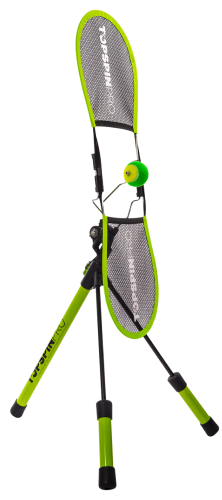
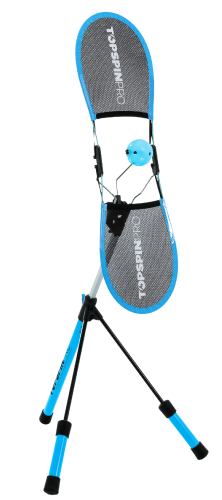
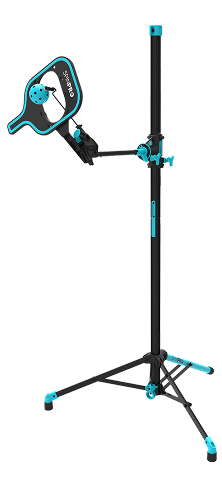




6 comments
Thank you for this post! It is all very insightful useful practical information that I will use as soon as I step back out on that court!!!
Thank you Laura. Hope you find some of those tips work for you.
Very insightful and a wonderful reminder to us all.
Thank you Pam, glad you enjoyed it!
Thanks Zoe – this was a good one for me. Sadly I tick too many of those boxes! That’s Winter training sorted.
as a high school tennis coach it really hit home what we’re trying to teach. Great advice! Thanks Rich